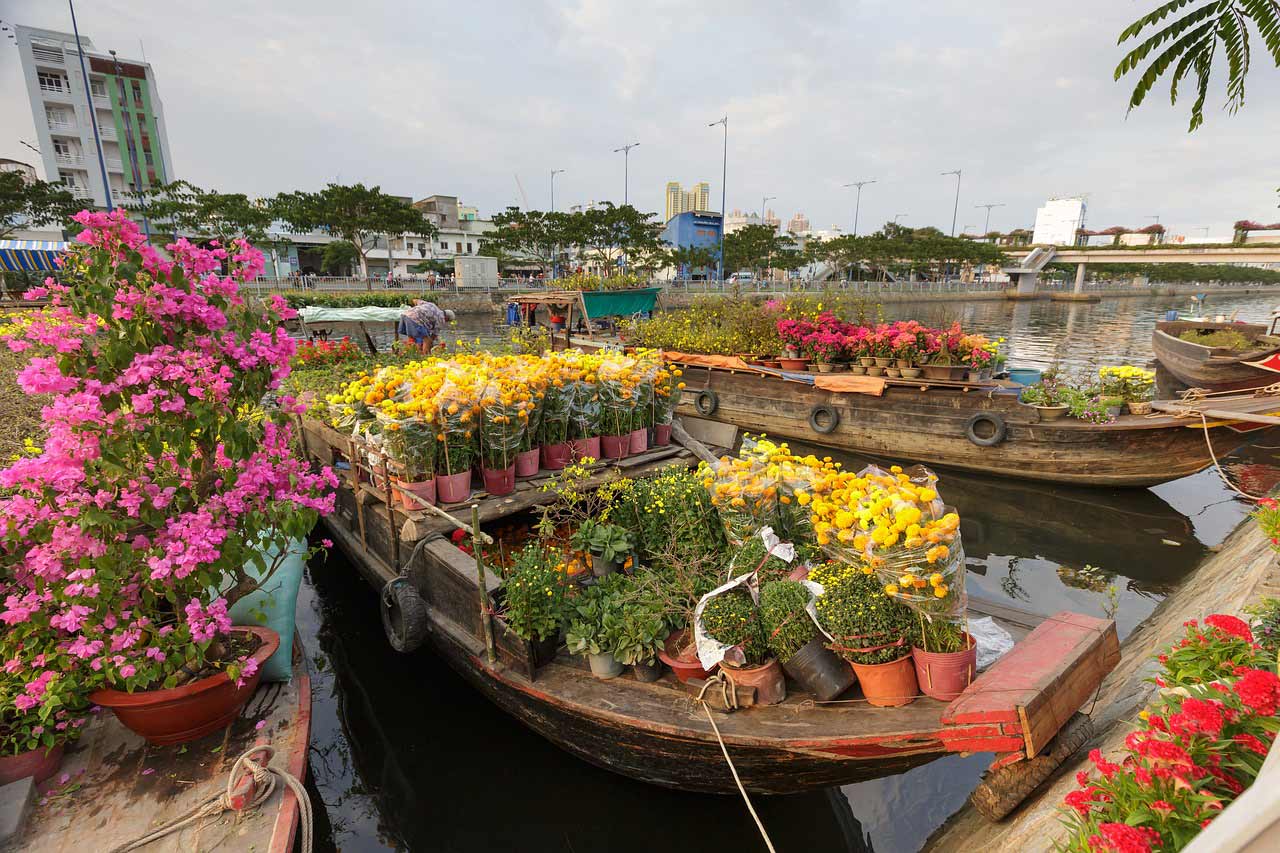- Vietnam's tourism industry is an important pillar of the country's economic development, contributing 6% to Vietnam's GDP.
- Vietnam expects to reach about 17 to 20 million tourists by 2020.
- To enhance the attractiveness of Vietnam's tourism industry, the Vietnamese government will proceed with reforms to infrastructure projects and human resource development.
Tourism, which contributes more than 6% to Vietnam's GDP, is one of the most important drivers of Vietnam's economic development. In 2011, the government announced "Vietnam's Tourism Development Strategy by 2020, Vision by 2030" and provided guidelines for promoting the tourism industry in cities and regions.
As part of its strategy, the Vietnamese government aims to attract 17 to 20 million foreign tourists by 2020.
Vietnam Binh Duong is a major tourist destination
Tourism target in Hanoi, a tourist destination in Vietnam
Hanoi, the capital of Vietnam, remains strong in 2019. In the first nine months of 2019, Hanoi accepted 21.5 million visitors and 5 million international travelers. This is a 10% increase over the previous year. Hanoi City is also preparing for the first domestic F1 race in April 2020. The Vietnamese government is working on the construction of transportation infrastructure and is working on expanding visa exemptions for foreign tourists. Thanks to international events in Hanoi, the number of visitors to Hanoi is expected to increase significantly.
Tourism target in Binh Duong, a tourist destination in Vietnam
The objective of the strategy of prioritizing the development of other provinces for tourism has made Binh Duong the second most popular destination in southern Vietnam, second only to Ho Chi Minh City. Binh Duong Province will promote the tourism industry by proclaiming "Binh Duong Tourism Development Strategy in 2020, Vision for 2030". The strategy includes a wide range of activities throughout the year to introduce travelers to Binh Duong's unique cuisine and culture, including Binh Duong Spring and Binh Duong Street Food 2019.
Binh Duong has attracted over US$2.4 billion in foreign investment in the first nine months of 2019, an 81% increase over the previous year. After Ho Chi Minh's 6 million travelers, 5 million travelers visited Binh Duong.
Growth of medical tourism in Vietnam
Vietnam is emerging as a key player in medical tourism in Southeast Asia. In 2017, 80,000 foreign tourists visited Vietnam for medical examinations and treatments, recording a total consumption of US$2 billion. Medical tourism is projected to grow 18-20% annually.
The main reasons for Vietnam's appeal to foreign patients are Vietnam's central location in Southeast Asia, political stability, affordability, and relatively good health care.
The main places for medical tourism are Phu Quoc, Vung Tau, Nha Trang and Da Nang. Tourist resort facilities in these areas are building more suitable facilities that combine medical care and tourism.
Infrastructure and human resources that support Vietnam's tourism industry
Infrastructure supporting Vietnam's tourism industry
Vietnam's infrastructure investment is double the global average.
The occupancy rate of major Vietnamese airports is not sufficient for tourists visiting Vietnam. In 2019, the number of foreign tourists flying to Vietnam has continued to increase.
According to the Vietnam Airports Corporation (ACV), Tan Son Nhat Airport in Ho Chi Minh City has not been refurbished since 2015 and has recorded an over occupancy rate of 30%. Hanoi's Noi Bai International Airport was also reported with 15% overcapacity. We have introduced some short-term measures such as reducing the number of restaurants, organizing counters, and increasing waiting rooms, but we need more measures.
For long-term measures, it is also important to construct new airports in major tourist areas to reduce the burden on the infrastructure of large cities.
Human resources that support tourism in Vietnam
The tourism industry in Vietnam lacks both quality and quantity of human resources. Many training programs are available, but the requirements are not yet met. In hotels and the like, it is difficult to find capable human resources who are capable of sufficient housekeeping and customer service. Since the ability to speak foreign languages and the technology for dealing with customers are the skills required for the tourism industry as a whole, we are focusing on human resource development through training programs as a whole industry.
Today, the tourism industry requires approximately 40,000 employees annually. However, the number of students majoring in tourism is 15,000. Despite the expected growth industries, the neighboring country Thailand is making a difference in labor productivity. In addition to promoting tourism, the Vietnamese government's strategy is to foster human resources who can support the tourism industry.
Vietnam's growth goals for tourism
In terms of the share of foreign tourists visiting Southeast Asia, Vietnam has increased by 14% (2018) over the past three years. However, challenges remain for the infrastructure and human resources that support the tourism industry. By addressing and improving these issues, Vietnam is expected to compete on an equal footing with other ASEAN countries and disseminate Vietnam's attractive natural and cultural heritage.


